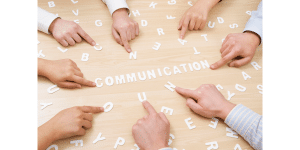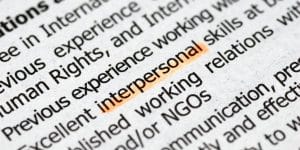Communication is a fundamental aspect of our lives, and relationships are built on it. However, communication is not just about speaking, but also about listening. Active listening is a crucial component of effective communication that can significantly enhance the quality of our relationships. Through active listening, we can understand others better, resolve conflicts more effectively, and improve our overall communication skills. In this article, we will explore the benefits of active listening and provide tips on how to become a better listener to enhance your relationships and communication skills. So, let’s dive in and discover how active listening can transform our relationships!
- What is Active Listening?
- The Benefits of Active Listening
- Barriers to Effective Communication
- Techniques for Active Listening
- How to Apply Active Listening in Various Relationships – Personal, Professional, and Romantic
- Active Listening Exercises
- Common Mistakes to Avoid When Practicing Active Listening
- The Importance of Nonverbal Communication in Active Listening
- How to Encourage Others to Practice Active Listening
- Conclusion
What is Active Listening?
Active listening is a communication technique that involves giving full attention to the speaker, understanding their message, and responding appropriately. Active listening is not just about hearing the words being spoken but also about interpreting their meaning and the emotions behind them. It requires the listener to be fully present in the moment, without any distractions, and to provide feedback to the speaker to ensure that they have been heard and understood. Active listening is an essential skill in building and maintaining healthy relationships, both personal and professional.
The Benefits of Active Listening
Active listening has numerous benefits, both for the listener and the speaker. By actively listening, we can:
1. Build Trust and Understanding
Active listening is a powerful way to build trust and understanding with others. When we listen actively, we show the speaker that we value their thoughts and feelings, and we are willing to understand their perspective. This creates a safe environment where the speaker feels heard and validated, which can lead to stronger relationships.
2. Improve Communication
Active listening can significantly improve communication by reducing misunderstandings and conflicts. When we actively listen to others, we can better understand their message, ask clarifying questions, and provide appropriate feedback. This leads to more effective communication, which can enhance both personal and professional relationships.
3. Resolve Conflicts
Active listening is a critical component of conflict resolution. By listening actively, we can better understand the other person’s point of view, which can help us find common ground and resolve conflicts. Active listening can also defuse tense situations and prevent misunderstandings from escalating into full-blown arguments.
4. Enhance Empathy
Active listening can enhance empathy by allowing us to put ourselves in the speaker’s shoes. By understanding their perspective, we can better relate to their feelings and experiences. This can lead to more meaningful and compassionate relationships.
5. Improve Self-Awareness
Active listening can also improve self-awareness by helping us become more aware of our own biases and assumptions. By listening actively, we can become more mindful of our own reactions and emotions, which can lead to more effective communication and healthier relationships.
Barriers to Effective Communication
While active listening can significantly improve communication, several barriers can hinder it. Some of the common barriers include:
1. Distractions
Distractions such as phones, computers, and other devices can hinder active listening. When we are distracted, we are not fully present in the moment, which can prevent us from understanding the speaker’s message.
2. Prejudices and Biases
Prejudices and biases can also hinder active listening. When we have preconceived notions about the speaker or their message, we may not be open to understanding their perspective fully.
3. Emotional Triggers
Emotional triggers such as anger, frustration, or anxiety can also hinder active listening. When we are emotionally triggered, we may not be able to listen objectively or provide appropriate feedback.
4. Cultural Differences
Cultural differences can also hinder active listening. When we are not aware of cultural differences, we may misinterpret the speaker’s message or provide inappropriate feedback.
Techniques for Active Listening
To become an active listener, several techniques can be helpful. Some of these techniques include:
1. Paying Attention
Paying attention is the first and most crucial technique for active listening. When we pay attention, we show the speaker that we value their message and are fully present in the moment. This can create a safe and supportive environment for communication.
2. Asking Questions
Asking questions is another essential technique for active listening. By asking questions, we can clarify the speaker’s message and ensure that we have understood it correctly. This can prevent misunderstandings and promote effective communication.
3. Paraphrasing
Paraphrasing is a technique that involves restating the speaker’s message in our own words. This can show the speaker that we have understood their message and can also help us remember the key points. Paraphrasing can also help prevent misunderstandings and promote effective communication.
4. Providing Feedback
Providing feedback is a technique that involves responding to the speaker’s message appropriately. This can involve expressing empathy, acknowledging the speaker’s feelings, or providing advice or suggestions. Providing feedback can create a supportive and collaborative environment for communication.
How to Apply Active Listening in Various Relationships – Personal, Professional, and Romantic
Active listening can be applied in various relationships, including personal, professional, and romantic. Here are some tips on how to apply active listening in each type of relationship:
1. Personal Relationships
In personal relationships, active listening can help build trust and understanding. To apply active listening in personal relationships, try the following:
- Set aside time to talk and listen
- Avoid distractions such as phones or computers
- Pay attention to the speaker’s body language and tone of voice
- Ask questions to clarify the speaker’s message
- Provide appropriate feedback
- Avoid interrupting or judging the speaker
2. Professional Relationships
In professional relationships, active listening can help improve communication and productivity. To apply active listening in professional relationships, try the following:
- Set aside time for one-on-one meetings
- Pay attention to the speaker’s message and body language
- Ask questions to clarify the speaker’s message
- Paraphrase to show that you have understood the key points
- Provide appropriate feedback
- Avoid interrupting or talking over the speaker
3. Romantic Relationships
In romantic relationships, active listening can help build intimacy and trust. To apply active listening in romantic relationships, try the following:
- Set aside time to talk and listen
- Pay attention to the speaker’s message and body language
- Ask questions to clarify the speaker’s message
- Provide appropriate feedback
- Express empathy and understanding
- Avoid interrupting or judging the speaker
Active Listening Exercises
To improve your active listening skills, several exercises can be helpful. Here are some active listening exercises you can try:
1. Mindful Listening
Mindful listening is a technique that involves paying attention to the sounds around you without judgment or distraction. To practice mindful listening, try the following:
- Find a quiet place to sit or stand
- Close your eyes or focus on a fixed point
- Pay attention to the sounds around you, both near and far
- Notice the different tones and pitches of the sounds
- Try to focus on the sounds without judgment or distraction
2. Reflective Listening
Reflective listening is a technique that involves paraphrasing the speaker’s message to show that you have understood it correctly. To practice reflective listening, try the following:
- Listen to a speaker or a recording of a speaker
- Pause the recording or the speaker’s message
- Paraphrase the speaker’s message in your own words
- Play the recording or continue listening to the speaker’s message
- Compare your paraphrase to the speaker’s message
Common Mistakes to Avoid When Practicing Active Listening
While active listening can significantly improve communication, several common mistakes can hinder it. Some of these mistakes include:
1. Interrupting
Interrupting the speaker can prevent effective communication and show that you are not fully present in the moment. Avoid interrupting the speaker and wait for them to finish their message before responding.
2. Making Assumptions
Making assumptions about the speaker’s message can prevent you from understanding their perspective fully. Avoid making assumptions and ask questions to clarify the speaker’s message.
3. Judging or Criticizing
Judging or criticizing the speaker can create a defensive environment and hinder effective communication. Avoid judging or criticizing the speaker and provide appropriate feedback.
4. Not Paying Attention
Not paying attention can prevent effective communication and show that you are not fully present in the moment. Avoid distractions and pay attention to the speaker’s message and body language.
The Importance of Nonverbal Communication in Active Listening
Nonverbal communication plays a crucial role in active listening. When we listen actively, we not only hear the speaker’s words but also interpret their body language and tone of voice. Nonverbal cues can provide valuable information about the speaker’s message and emotions, which can help us better understand their perspective. Some nonverbal cues to look out for when practicing active listening include:
- Eye contact
- Facial expressions
- Body posture
- Tone of voice
- Gestures
How to Encourage Others to Practice Active Listening
Encouraging others to practice active listening can significantly improve communication and relationships. Here are some tips on how to encourage others to practice active listening:
1. Lead by Example
Leading by example is a powerful way to encourage others to practice active listening. When you listen actively, others are more likely to follow your lead.
2. Provide Feedback
Providing feedback can help others become more aware of their listening skills and encourage them to improve. Provide appropriate feedback to others to encourage them to practice active listening.
3. Create a Safe Environment
Creating a safe environment can encourage others to practice active listening. When people feel safe and supported, they are more likely to listen actively and communicate effectively.
Conclusion
Active listening is a powerful communication technique that can significantly improve the quality of our relationships. By actively listening, we can better understand others, resolve conflicts more effectively, and improve our overall communication skills. To become active listener, we can apply several techniques, such as paying attention, asking questions, paraphrasing, and providing feedback. We can also practice active listening in various relationships, including personal, professional, and romantic, and try exercises such as mindful listening and reflective listening. By avoiding common mistakes and paying attention to nonverbal communication, we can become more effective listeners and encourage others to practice active listening. With active listening, we can transform our relationships and enhance our communication skills.
Related Links:











